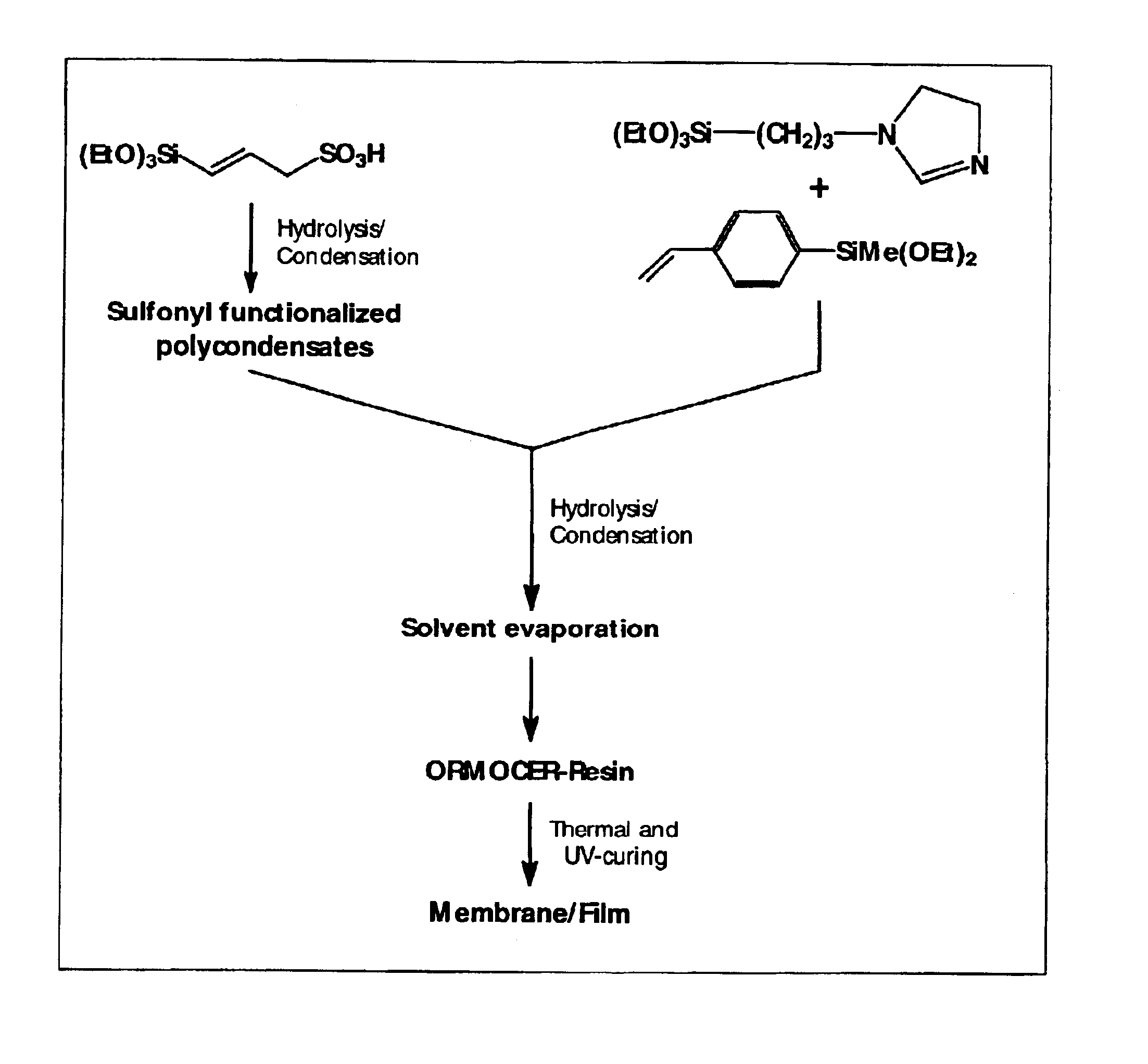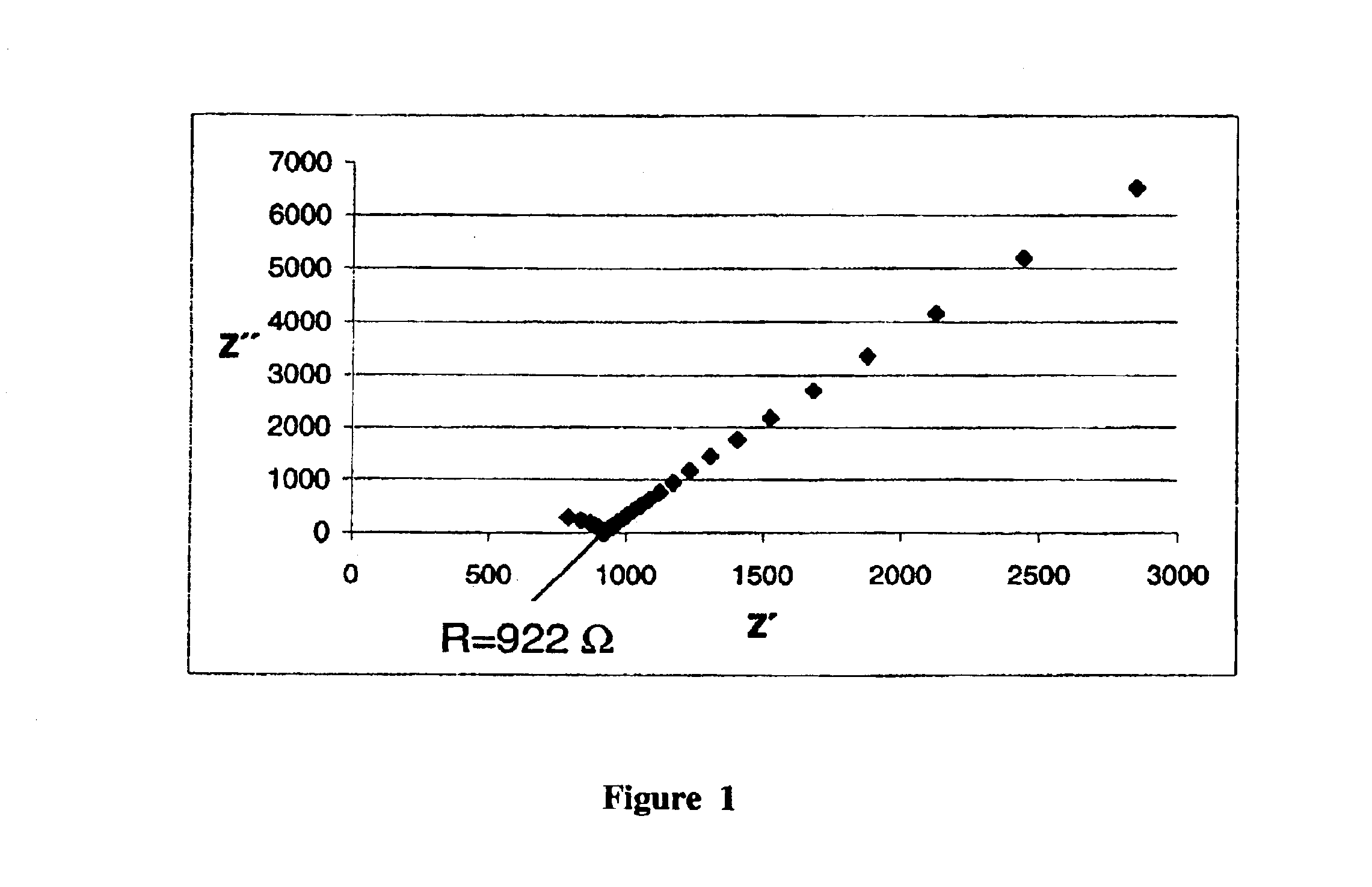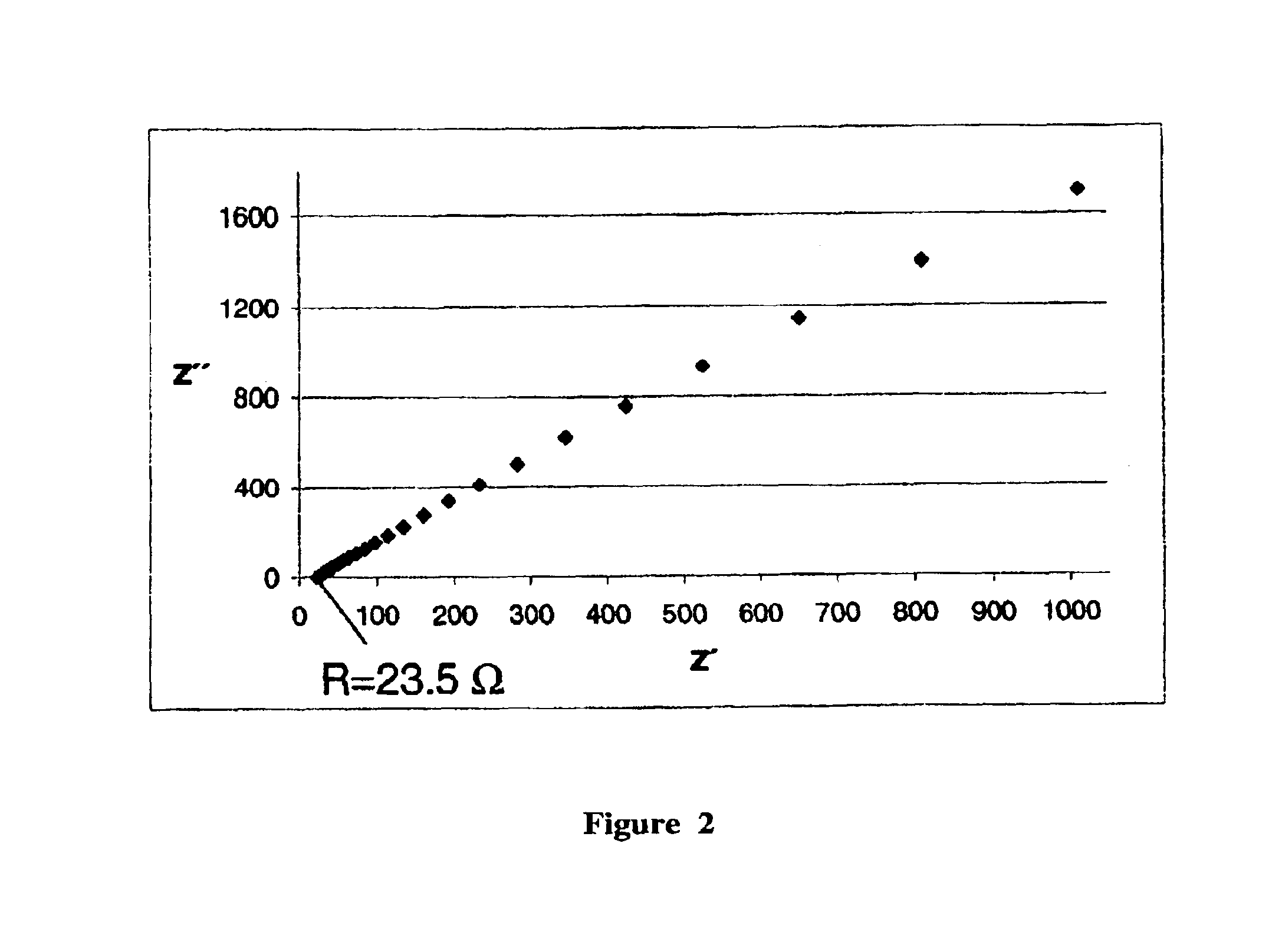Proton-conductive membranes and layers and methods for their production
a technology of proton-conductive membranes and layers, applied in the direction of sustainable manufacturing/processing, final product manufacturing, electrochemical generators, etc., can solve the problems of mass production, low output of fuel cells with such membranes, and high cost of polymers
- Summary
- Abstract
- Description
- Claims
- Application Information
AI Technical Summary
Benefits of technology
Problems solved by technology
Method used
Image
Examples
example 1
Synthesis of p-Vinylphenylmethyldiethoxysilane
[0031]
[0032]In a three-neck flask under argon and while being stirred mechanically, 11.7 g (480 mmol) of magnesium chips and some iodine crystals in 40 ml of a solution A (55% diethyl ether, 45% tetrahydrofuran) are mixed together. Then, a solution of 80.0 g (436 mmol) of bromostyrene, dissolved in 210 ml of solvent mixture A, is slowly added in drops, and thus a continuous exothermic reaction is achieved. The solution is stirred under reflux. After the end of the exothermic reaction, the reaction mixture is cooled to 2° C., and then 155.5 g (872 mmol) of methyltriethoxysilane in 160 ml of dry diethyl ether is added; the temperature must not exceed 15° C. After the end of the substitution reaction, stirring is continued at room temperature overnight. Approximately 200 ml of n-heptane is then added, thus the magnesium salts precipitate. The latter are filtered off, 9.7·10−2 g (0.44 mmol) of 2,5-di-tert-butylhydroquinone is added to the fi...
example 2
Synthesis of p-Vinylphenyltrimethoxysilane, Bis-(p-vinylphenyl)-dimethoxysilane and Tris-(p-vinylphenyl)-methoxysilane
[0033]Styryl magnesium bromide is produced as in Example 1. Then, 39.9 g (262 mmol) of tetramethoxysilane in 80 ml of dry diethyl ether is added to the cold solution (2° C.) of the Grignard reagent. After the addition, the batch is heated for one and one-half hours to 45° C., thus the substitution proceeds fully, and then it is stirred overnight at room temperature. The batch is worked up as in Example 1. After the solvent is removed, 105.3 g of a light yellow mixture is obtained. 29Si-NMR-spectroscopy shows that the crude product contains p-vinylphenyltrimethoxysilane, bis-(p-vinylphenyl)-dimethoxysilane and tris-(p-vinylphenyl)-methoxysilane.
[0034]The mono- and di-substituted alkoxysilanes are separated by distillation from the crude product and purified:[0035]15.8 g (70.5 mmol) of vinylphenyltrimethoxysilane (mono-substituted alkoxysilane), yield 34.9%, boiling po...
example 3
Synthesis of a Proton-conductive Membrane
[0039]
A(3-Sulfonyl)-1-propenyltrimethoxysilane 1.1 g (4.5 · 10−3 mol)Bp-Vinylphenylmethyldiethoxysilane0.71 g (3.0 · 10−3 mol)Cp-Vinylphenylmethyldiethoxysilane0.71 g (3.0 · 10−3 mol)DN-(3-Triethoxysilylpropyl)-4,5- 1.2 g (4.5 · 10−3 mol)dihydroimidazole
[0040]In a first flask, components C, D and 2.4 g (7.5·10−2 mol) of methanol are mixed together at room temperature. Next, 0.17 g (9.7·10−3 mol) of water is added to this. After 24 hours, components A, B and 1.6 g (5.0·10−2 mol) of methanol are mixed together at room temperature and then 0.17 g (9.7·10−3 mol) of water is added. After another 24 hours, the two systems are mixed together. The batch is stirred for another 24 hours. Then 1.2 g (1.8·10−2 mol) of imidazole is added, and the solvent is removed (in a rotary evaporator). After being spun off, a moderately viscous resin is obtained that is hardened after application as a layer, e.g., on a Nafion film or as a membrane by introduction in ...
PUM
| Property | Measurement | Unit |
|---|---|---|
| operating temperature | aaaaa | aaaaa |
| temperatures | aaaaa | aaaaa |
| temperatures | aaaaa | aaaaa |
Abstract
Description
Claims
Application Information
 Login to View More
Login to View More - R&D
- Intellectual Property
- Life Sciences
- Materials
- Tech Scout
- Unparalleled Data Quality
- Higher Quality Content
- 60% Fewer Hallucinations
Browse by: Latest US Patents, China's latest patents, Technical Efficacy Thesaurus, Application Domain, Technology Topic, Popular Technical Reports.
© 2025 PatSnap. All rights reserved.Legal|Privacy policy|Modern Slavery Act Transparency Statement|Sitemap|About US| Contact US: help@patsnap.com



